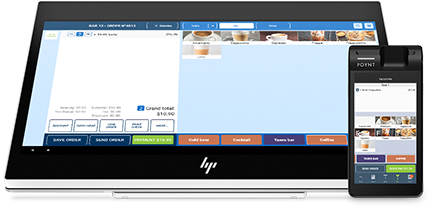Point of Sale Tablet: Creating the Ultimate Shopping Experience, Can Also Be Used for Restaurant POS Tablet4 min read
 Last month, TechTarget’s (NASDAQ: TTGT) ComputerWeekly.com — the UK’s leading online technology news and IT-management source — featured award-winning fashion retailer, Aurora Fashions, in its guide to companies using social networking in their Customer Relationship Management (CRM) process (“Social CRM”). The key topic was Aurora’s new iPad mobile ordering system, which is being trialed in eight of Aurora’s London and Oxford stores. (This is the fourth article in our series on Aurora Fashions.
Last month, TechTarget’s (NASDAQ: TTGT) ComputerWeekly.com — the UK’s leading online technology news and IT-management source — featured award-winning fashion retailer, Aurora Fashions, in its guide to companies using social networking in their Customer Relationship Management (CRM) process (“Social CRM”). The key topic was Aurora’s new iPad mobile ordering system, which is being trialed in eight of Aurora’s London and Oxford stores. (This is the fourth article in our series on Aurora Fashions.
With more retail stores testing out tablet computers for POS – it also makes this blogger wonder when we will start to see similar solutions in place in the form of a restaurant POS tablet.
ComputerWeekly says Aurora believes customer management should be handled at the local store level, where customers can share information, and store teams can directly interact and engage with customers, some of whom associates already know well. But, although Aurora’s traditional, outdated POS system allows store associates to look up a certain amount of customer information when customers check out at the register, Aurora’s Director of Group Strategic Development, Ish Patel, says, “This is happening at the wrong end of the journey – it should happen when they come into the store,” [not when they are leaving]. The new iPad POS system will put customer management where it belongs – locally, in the hands of the people directly involved in customer engagement and service. “We would love to know about our customers based on how much they share with us,” Patel told ComputerWeekly.
Aurora’s new iPad POS systems can take social clienteling to a whole new level by enabling associates to collect, enter, update, and/or access customer information from anywhere in the store — even the fitting room. Depending on just how much information customers do decide to share, a wealth of customer information could potentially be amassed. This might include complete contact details, employment data, personal information, purchase history (not just basic transaction-generated customer data, but a complete purchase profile, including such details as frequency and dates of both online and in-store shopping visits; whether or not the visit was in response to a particular advertisement, email notification, or tweet, or prompted by a sale or other promotion; items purchased and amount spent; and whether the purchase was completed online or in-store), sizes (by apparel type and style), fashion preferences (such as types of apparel, combinations, prints, skirt length, neckline, heel height, purse size and style), fashion favorites (such as favorite designers, styles, and colors, and even favorite perfume, toiletry, jewelry, and accessories), tastes (including both likes and dislikes), allergies to certain materials (such as wool), preferred shopping days and times, fitting room preferences or specific needs/requests, wish and gift lists, and other relationship-building details, such as activities and interests (travel, club memberships, etc.), personal favorites (such as favorite author, book, blog, movie, TV show, song, hotel/resort, restaurant, coffee house, club, spa, food, wine, cocktail, chocolate, and dessert), as well as any customer inquiries, comments, compliments and complaints, and store responses/actions thereto. This information can make all the difference in the customer’s overall shopping experience.
Unlike outmoded traditional POS systems, the Apple POS tablet has the architecture, not only to collect and track this vast store of consumer intelligence, but to optimize and leverage it as well. Team members and associates can use the data to augment customer service and engagement and create an in-store shopping experience exclusively tailored to the individual shopper, strengthening the bond between associates and customer. The fashion retailer’s brand executives and managers can mine and leverage the customer information to create effective, targeted marketing, advertising, promotional, and sales messages precisely tailored to its customers. (See our previous blog post, “POS a POS? An iPad POS System Makes POS = Position of Strength.”)
The architecture of the digital POS tablet makes it uniquely suited to meet the challenge of helping Aurora “create a seamless multi-channel customer experience focused on enhancing in-store customer engagement” with each of its women’s fashion brands (Coast, Oasis, and Warehouse), and deliver the ultimate, unforgettable, bespoke shopping experience.
Interestingly enough – this tablet is not just limited to the functionality of a retail POS hub. Rather, it can also be used as a restaurant POS tablet, too. When considering how effective this solution is for Aurora, and also when factoring how costly traditional POS is for a restaurant to implement (something that can run owners a few thousand dollars), it makes sense to also consider the prospect of using iPad as a restaurant POS tablet as well.
Disclaimer: This is an independent report sourced from one or more news articles and or press releases; none of the company’s, entities or technologies digressed in this report are affiliated with or a client of Aptito.
Aptito offers a unique All-in-One Solution that features a restaurant POS tablet which also includes a reservation app, integrated POS with remote access and an easy-to-use online interface. Click Here to learn more.



